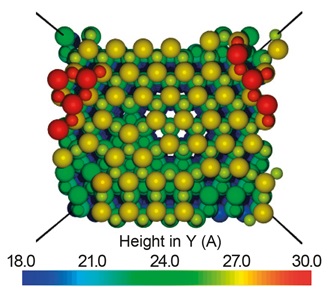Improving the processing and performance of materials
New methods to better explain the behaviour of specialist materials
Research conducted in the Department of Mathematical Sciences (2006-13) has led to an improved awareness and understanding in the areas of thin film growth and in irradiated structural materials for nuclear power through the development of two new methods.

The first method is an extension of an existing molecular dynamics method. A major problem with molecular dynamics is that it is suitable for modelling very fast processes that take microseconds, but much less suitable for slower processes such as thin film growth where the rate is measured in seconds.
To overcome this limitation, a new method has been devised in which the fast processes are calculated by molecular dynamics and the slower transitions are calculated adaptively using a different algorithm.
This method has been applied to the growth of thin films, giving guidance to industrialists as to the optimum conditions for growth. Extended time scale methods have also been applied to the modelling of radiation effects with applications in the nuclear industry.
The second area of work relates to Bader charge analysis which divides molecules into atoms. The research team developed an improved method currently used in conjunction with quantum chemistry software packages. The work also involved use of the Bader charge allocation in a unique way that enables the computation of large systems of atoms beyond the scope of numerical quantum calculations.